Site Links
Howdy, Stranger!
It looks like you're new here. If you want to get involved, click one of these buttons!
Quick Links
Categories
In this Discussion
Who's Online (0)
Rival MTM build
in DIY
I am starting a new build using Paul K's Rival MLTL design - my question is he calls for stuffing in the top half of the enclosure but no mention of dampening/absorption for the rest of the enclosure. Should I be lining the box with something or does that mess with the design? I have attached his build summary.
Comments
There's no benefit from lining the rest of the cabinet. The stuffing density, location, and length are designed to dampen the undesirable frequencies inside the box before they escape from the port. Same with the location of the port.
Great - thanks John!
Started my build this week - finally got one cabinet done so I could get the drivers installed and take some sweeps. Didn't realize how big these are going to be until I brought one into the house - might be hard to convince the wife that they should go upstairs I like the look of these Wavecor tweeters - the TW030WA08 - nice big dome and the faceplate is a bit bigger in diameter than the standard offerings from SB and the likes. I have not done any roundovers yet as I have not decided how I am going to finish them so I wanted to leave my options open. Anyways here are a few pics - will update as I make some more progress this week.
I like the look of these Wavecor tweeters - the TW030WA08 - nice big dome and the faceplate is a bit bigger in diameter than the standard offerings from SB and the likes. I have not done any roundovers yet as I have not decided how I am going to finish them so I wanted to leave my options open. Anyways here are a few pics - will update as I make some more progress this week.
Have made a bit of progress on this build in the last week or so. Started working on a crossover design - kind of flipped flopped between a few different versions, but seem to have settled on a 2nd order on the woofers and 3rd on the tweeter.
And measured response in room
Definitely a 4 ohm speaker
Got the other cabinet together so I could do some listening - was kind of expecting a bit more bass output than what I am getting. I put the recommended 10oz of stuffing in the boxes but maybe my measurements were off - will have to play around with it this week and maybe also try moving the speakers around the room a bit to see if that helps.
Looks good but your bass is rolling-off below 300 Hz [instead of increasing] and looks like it will be weak.
Maybe more baffle step or just add a small sub?
The more I experiment with DSP/Speakers the more I think I want to just add a sub and get more tactile/midbass from my mains. (I love detailed audio).
You may need to revisit the crossover, as Steve pointed out you are rolling things off a bit. It appears you only have about 2-3db of baffle step compensation, that is not enough.
Alternatively, you can push them against the wall and see if that yields the sound you are looking for.
These drivers in this alignment should really have some impact below 200Hz.
I agree, take a look at your response. It basically has a broad hump from 200 tp 12K, and if you pull that down to flat, it should sound much better balanced.
What they said.
A Rival R176 MTM pair should have plenty of bass, especially in a MLTL. I almost always take near field woofer and port measurements as well as 1/6 octave non-gated measurements to validate bass tuning.
I'd also like to see the woofers roll off better above 2.5K - this is what I used in my Rival MTM
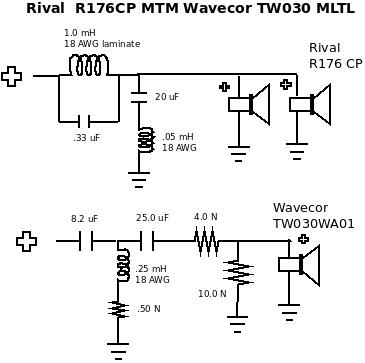
Hard to say for sure, but looks like I was initially disappointed in bass, and lowered the tweeter a bit and ended up with about 4dB of BSC final.
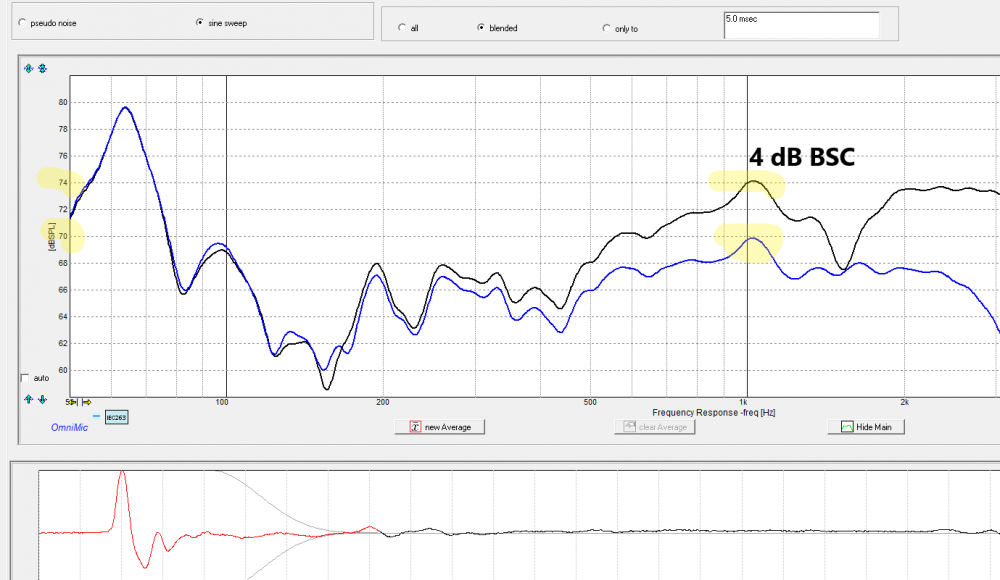
Thanks guys - will mess around with the x/o and see if I can get that hump down.
Another mild critique if you do not mind - I would try and tank the top end of the woofer as well. A very small cap (0.33 or so) will bring the top end down a ways. The slope is too shallow relative to the highpass slope. You may be surprised at what that can do. If you look closely, you can see the woofer is contributing to a gain in SPL all the way to 8K or so. IMHO that is too high.
Otherwise it looks like you can just add a larger inductor to the woofer section and tinker with the tweeter padding.
Have you played these enough hours to be sure that the woofers are properly broken in? In my experience, woofers loosen up over some period of time.
Removing some stuffing might help also, but it might be a tradeoff between bass output and smoothness.
I do have a small cap across the woofer coil - a .22mf - might mess around with the value and see if I can get that woofer response down.
Here is my current x/o
The woofer side looks pretty good - agree to play around with the .22uF a bit. The whole thing will sound much cleaner if the woofer rolls off way down in the tweeter range.
I did not like the breakup on the Rival woofers and tanked the response as well, then moved the x-o point lower, then decided to give to my brother in-law.
mF - millifarads, though I'm fairly confident the part values are uF - microfarafs.
I realize this isn't "the crossover thread", but I would generally avoid placing a cap in parallel with the primary woofer inductor, at least not without some series resistance. The two parts together make the entire woofer filter a notch, it's no longer a low pass. Some series resistance with the small capacitor can help, but for a simple notch I'd rather place an inductor in the parallel leg with the 22uF cap and resistor.
Keeping things as is, 0.22uF is very possibly placing that notch at more like 10kHz, not really targeting the woofer breakup. You might try increasing the value, and looking at the filter response, addGraph -> Filter Response in Xsim.
Better yet, I've found this crossover topology can work wonders for many woofers, but it can be a bit more fiddly to get the part values right.
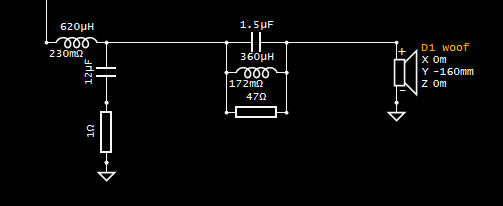
With tanks you do not want the cap to get too large as you will allow ripple from the woofer into the upper tweeter ranges. 1.5uF is about the highest I would go. Using a 0.22uF with large coil will not be Fc at 10k, but more like half that.
I've found caps In the USA to be labeled either uF or mfd and mean the same thing.
InDIYana Event Website
With a 4 ohm load, are you sure? With my 4 ohm Rival driver, it came to 11kHz.
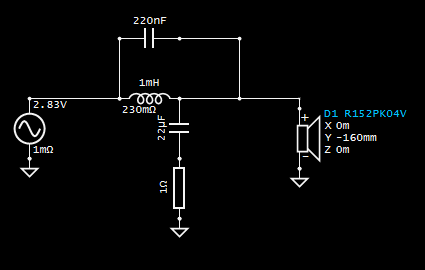
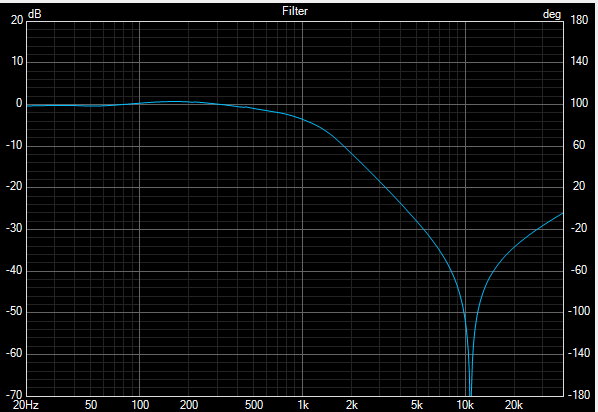
Okay, I see your point. And if he adds more BSC by increasing the coil value? I'm not used to seeing 1.0mH on woofers in a 7" 2way. Usually it's at least 1.5mH. It will shift lower, but somewhere between 5k and 10k like I'm used to seeing.
InDIYana Event Website
Maybe 9kHz with 1.5mH. use 0.68uF to bring the notch down to 5kHz with 4 ohm 152mm Rival PK anyway.
Personally, I would start with circuit values similar to this, and adjust as needed from here with the pair of R176.
On my Rival mtm, I used a 1.3mh inductor with a .33uf and 3ohm resistor. The resistor is there to keep the impedance happy in the 20k plus range.
I not only had to kill the Rival's break up... I also had to knock down the 9" wide baffle's diffraction peak. Both were very pronounced on and off axis. After I did that the Rivals sound awesome.
Lots of great info - thanks! Will find some time this week to mess around with it.
My Fenrir reflect the same as the others here, 3rd order electrical plus shunt LC to kill the breakup on the Rival carbon paper.
InDIYana Event Website
Made some headway this week - have been messing around with the x/o and seem to be getting these woofers upper response lower. I removed the small cap off the woofer coil and added a parallel lcr as shown in dcibel's post above - also increased the value of the woofer coil to 1.6mh. Will try and piece together the other x/o tonight and have a listen.
Just as a point of reference, here is the crossover for my Safenia design. Just an MT, but you can see how the breakup was addressed. Crossover point is right at 1.85K
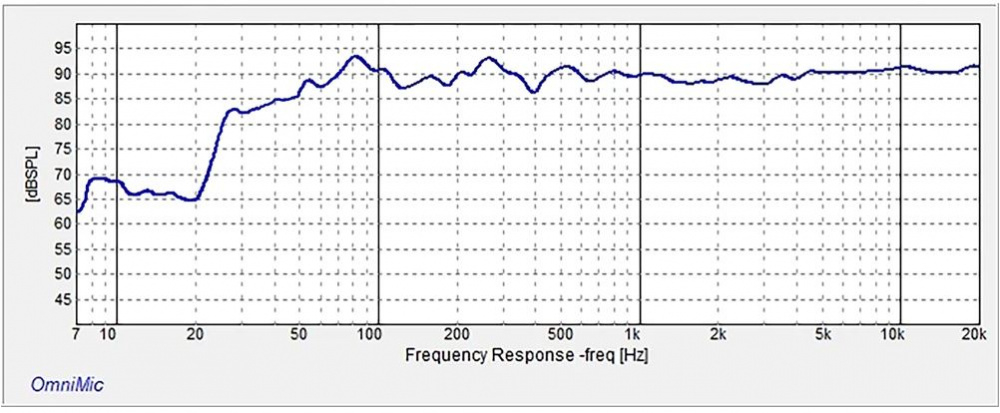
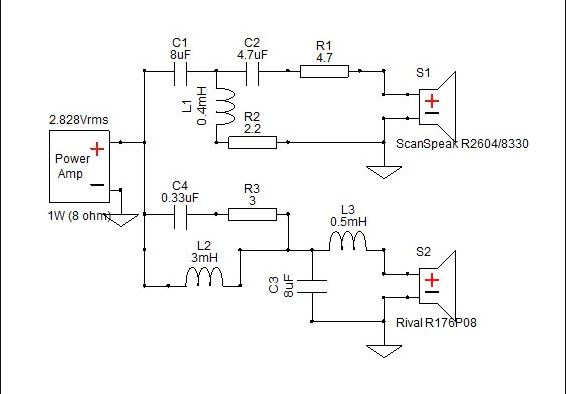
Would you be willing to share your x/o Craig? My baffle is 9"wide as well.
Sure! Actually my baffles are closer to 9.5" wide with 1" roundovers.
Put these back together yesterday after painting the boxes and baffles. Very pleased with how they sound and they look much better with some color over the raw wood and particle board. Looking forward to get other's listening impressions next weekend.
Lets see some pics!